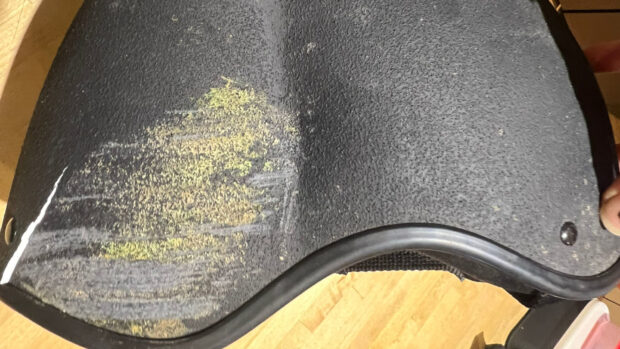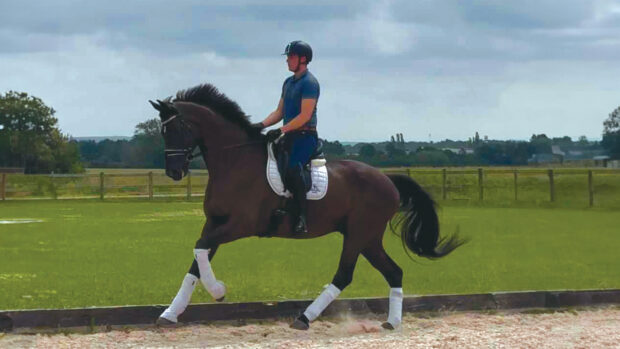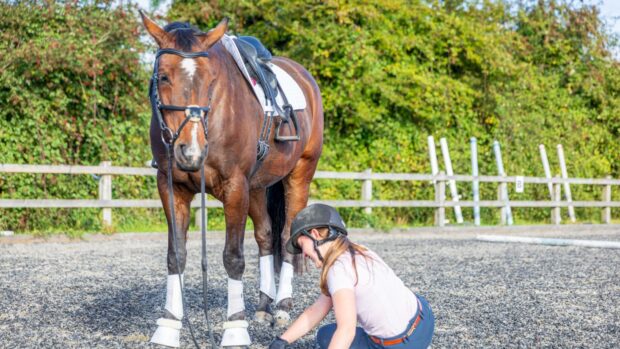Riders will not be allowed to get back on and continue their round after a fall, in new team-chasing rules being trialled this spring.
The new rule covers riders unseated on course – horse falls already result in elimination for the combination – and it is being introduced “on a trial basis” for the 2023 spring season.
A notice from British Team Chasing (BTC) said the decision followed discussion with those involved “in all aspects” of the sport, including event organisers, officials and competitors at novice, intermediate and open level.
“This change is introduced to assist organisers and competitors with rider safety during the competitions, but will be subject to a more detailed full review ahead of the autumn ’23 season, which will include analysis of data from the spring season’s events,” said the notice. “The rule change is therefore introduced on a trial basis only at this stage.”
Riders who take a tumble on course are “immediately eliminated and must retire”. If they continue and jump a further fence, the whole team will be eliminated. BTC also recommends competitors who suffer a “heavy fall” should see an on-duty doctor before leaving.
The announcement sparked mixed responses on social media.
BTC chairman Philip Cowen told H&H the new trial rule follows “careful consideration and reflection in recent months by British Team Chasing”.
“Although the sport has always been well known through the equestrian world for its thrills (…. and occasional spills), there is also a strong desire to ensure that team chasing retains its unique characteristics,” he said. “Not least where the camaraderie of a team with a ‘have-a-go’ approach at any level within the sport can produce a great deal of fun and ultimate success for those riders, and all without the burden of a weighty and overly detailed rulebook.
“It is equally important that as the sport evolves for the future, events are able to be organised and hosted in a manner which is both safe and responsible in the light of today’s medical standards and safety research.
“Ultimately rider safety and horse welfare are of paramount importance to the success of individual events and the sport as a whole.”
Mr Cowen added that BTC will undertake a “thorough review” of rider fall data from fixtures this spring, prior to making any further announcements.
“In particular we look forward to engaging with competitors at all levels within the sport, alongside event organisers, officials and spectators over the course of the next few weeks,” he added.
“That thorough review will ultimately inform how best to address all of these factors for the continued wellbeing and success of the sport in the longer term.”
Team chaser Jess Powell, who is a doctor, was among those to comment.
“As a bad rider I’m devastated as I’ve managed to get two top 10 finishes after remounts – leading,” she said.
“As a doctor who used to cover equestrian events I applaud British Team Chasing. I did several 15- and 30-minute checks at BE [British Eventing] events for what looked like innocuous falls and picked up raging concussion.
“There will always be another day, it’s not worth risking early onset dementia or serious traumatic brain injury,” she said. “Don’t get me wrong as a rider who grew up in the 80s and 90s constantly falling off ponies this can seem extreme, but with [my] work hat on – 100% the correct call.”
BTC has also updated its hat and body protector standard rules for this season, to fall in line with BE, the Pony Club [PC] and British Riding Clubs [BRC].
Hats must be tagged with a BE, PC or BRC-approved tag and must not have a fixed peak. Only hats that meet the following standards will be accepted: British and European PAS 015 (2011) or VG01 040 2014-12 – both with a BSI Kitemark or Inspect IC Mark; American ASTM F1163 2004a onwards with SEI mark, Snell 2016 or 2021 (no other mark is needed with Snell) or Australia and New Zealand AS/NZS 3838 2006 onwards with SAI Global mark.
All competitors must also wear a body protector British Equestrian Trade Association (BETA) 2009 Level 3 standard (purple label) or BETA 2018 Level 3 standard (blue and black label). An up-to-standard body protector is also required when competitors are wearing air jackets of any make.
From 1 January 2024 body protectors meeting the 2009 standard will no longer be permitted for use – the BETA 2018 label will be the only accepted standard.
You might also be interested in:

Subscribe to Horse & Hound magazine today – and enjoy unlimited website access all year round

Finding the key to talented but strong horses *H&H Plus*

Groundbreaking concussion and return to riding guidelines released

Can gumshields help reduce concussion? We ask the experts *H&H Plus*
Horse & Hound magazine, out every Thursday, is packed with all the latest news and reports, as well as interviews, specials, nostalgia, vet and training advice. Find how you can enjoy the magazine delivered to your door every week, plus options to upgrade your subscription to access our online service that brings you breaking news and reports as well as other benefits.




